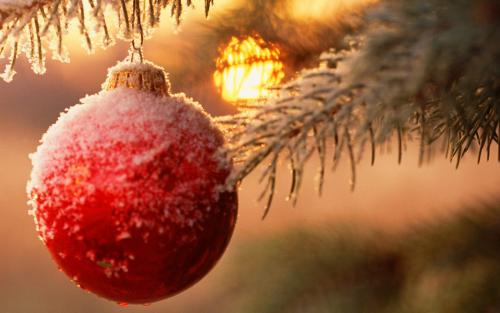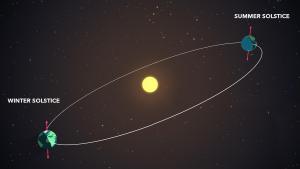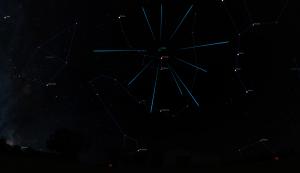Celebration of Space - December 18, 2020
This past Sunday – Monday, December 13-14, 2020 the annual Geminid Meteor Shower peak occurred. A slow starter due to clouds, the Geminids really took off after 10:00 pm. Though not the best display we have seen of the Geminid shower, this year was certainly one of the better presentations! At Frosty Drew, we stayed out until pre-dawn and counted well over 1,000 meteors, with dozens of fireball meteors occurring. Many visitors stayed well into the better viewing period, and the night air was filled with gasps from visitors as festive blue shooting stars lit up the sky. It was certainly a night to remember!
This coming Monday, December 21, 2020 at 5:03 am, Earth will arrive at the point in our orbit where the Northern Hemisphere is at maximum tilt, 23.4°, away from the Sun. This is the Winter Solstice and marks the first day of the winter season in the Northern Hemisphere. On the Winter Solstice, we will experience our shortest daytime period of the year in the Northern Hemisphere. Locations north of the Arctic Circle will have 24 hours of night with corresponding locations south of the Antarctic Circle experiencing 24 hours of daylight. In the Southern Hemisphere the Sun will cross the zenith (directly overhead) along the Tropic of Capricorn, resulting in the Sun crossing the sky 23.4° below Earth’s equator. All that aside, the Winter Solstice brings all the fabulous celebrations we have during this time of the year. It’s a harbinger of the cold long dark ahead as we descend into the winter, but it’s also the point that the days start to get longer as we begin our shift towards the warmer season. So take a moment at noon on Monday to step outside and notice how low the Sun is in the sky and welcome the reason for the season as we make our final plunge into holiday bliss and close out an unforgettable year of terrible and amazing happenings.
Be sure to step outside every clear night over the next week to observe Jupiter and Saturn putting on a stunning show in the SW sky just after sunset. Each night this weekend, the two planets will continue to approach each other visibly. The closest point they will appear in our evening sky will be on Monday, December 21st. After that date, the two planets will still appear quite close as they slowly move apart. Even though the closest point will be on Monday, the show will continue for several days around and after that day. So make it a regular 2020 holiday event to step outside about 30-60 minutes after sunset to catch Jupiter and Saturn in conjunction.
Overnight Tuesday, December 22-23, 2020, the annual Ursid Meteor Shower will peak. A rather slow going meteor shower, the Ursids will bring an increase in regular meteor activity of about 10 meteors per hour. Considering that the Moon will sport a 70% waxing gibbous phase, setting at 12:48 am, the sky will be a bit bright for meteor watching until after the moon sets. Considering the morning hours are the best times to catch the shower, this puts us in the clear as far as the Moon goes. The Ursid meteor shower is the result of Comet 8P/Tuttle, a periodic comet with an orbital period of 13.6 years. As 8P/Tuttle orbits the Sun, it crosses Earth’s orbit and leaves a debris field of tiny dust – rice sized particles of ice behind. When Earth orbits through this debris field, the particles are captured in Earth’s gravity and enter the atmosphere at rates of about 20 miles per second, and burn up. Meteors will appear to radiate from the bright star Kochab in the constellation Ursa Minor (little dipper). If setting out to watch the Ursid shower, plan to arrive at a dark location, free of artificial light, and be there for about 1:00 am. Lay on your back with your feet to the North and look to the zenith (top of the sky). This shower is not as active at the Geminids, Quadrantids, or Perseids, so do not expect a similar display. Regardless, for those who are hooked on meteor showers after the fabulous Geminid peak, this is another chance to catch a few shooting stars zipping by.
Have a fabulous Winter Solstice from all the astro-geeks at Frosty Drew Observatory!
- Author:
- Scott MacNeill
- Entry Date:
- Dec 18, 2020
- Published Under:
- Scott MacNeill's Columns




